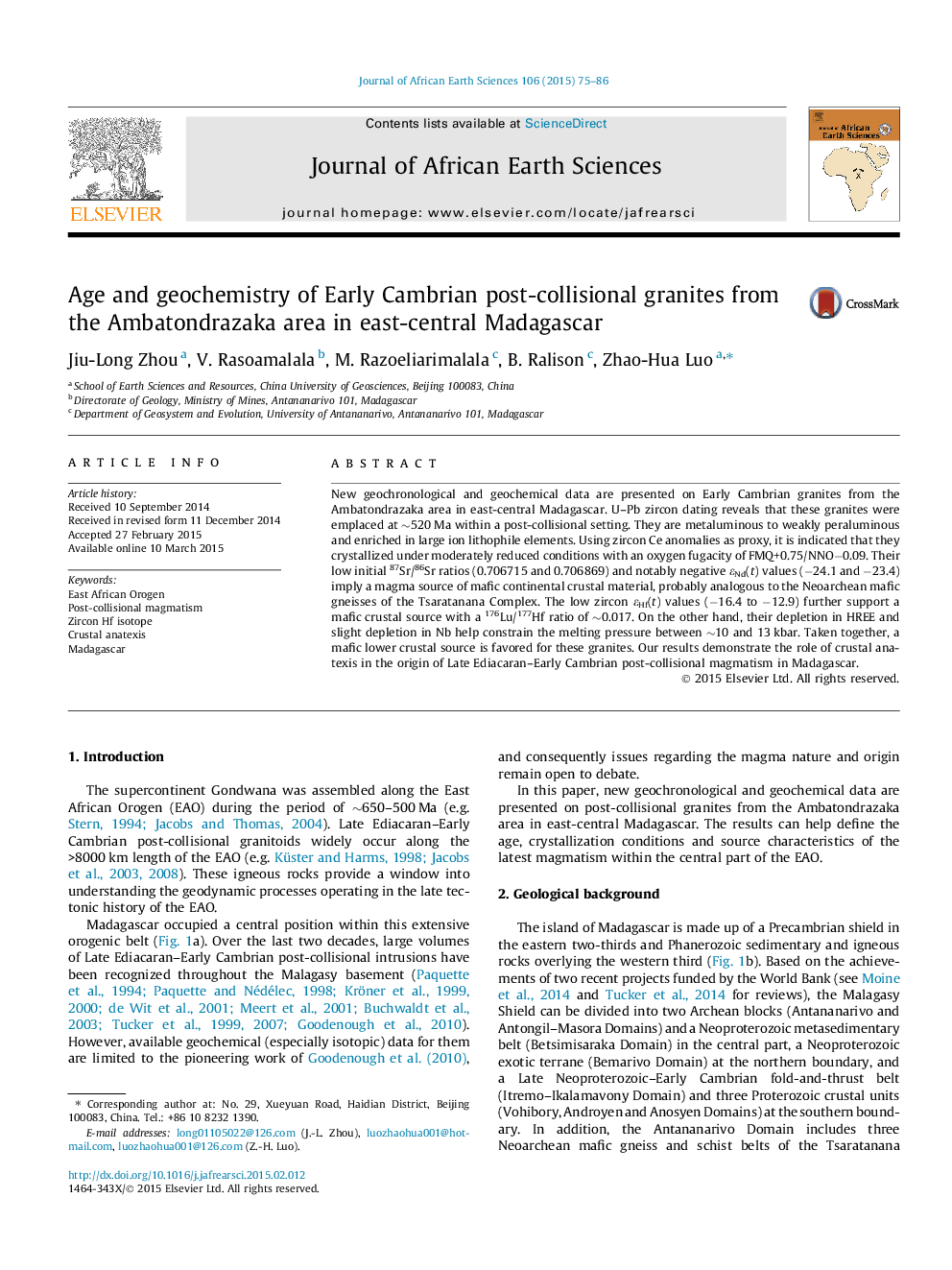| Article ID | Journal | Published Year | Pages | File Type |
|---|---|---|---|---|
| 4728524 | Journal of African Earth Sciences | 2015 | 12 Pages |
•The ∼520 Ma granites were produced in a post-collisional setting.•They crystallized under moderately reduced conditions.•They were derived from a mafic lower crustal source.
New geochronological and geochemical data are presented on Early Cambrian granites from the Ambatondrazaka area in east-central Madagascar. U–Pb zircon dating reveals that these granites were emplaced at ∼520 Ma within a post-collisional setting. They are metaluminous to weakly peraluminous and enriched in large ion lithophile elements. Using zircon Ce anomalies as proxy, it is indicated that they crystallized under moderately reduced conditions with an oxygen fugacity of FMQ+0.75/NNO−0.09. Their low initial 87Sr/86Sr ratios (0.706715 and 0.706869) and notably negative εNd(t) values (−24.1 and −23.4) imply a magma source of mafic continental crustal material, probably analogous to the Neoarchean mafic gneisses of the Tsaratanana Complex. The low zircon εHf(t) values (−16.4 to −12.9) further support a mafic crustal source with a 176Lu/177Hf ratio of ∼0.017. On the other hand, their depletion in HREE and slight depletion in Nb help constrain the melting pressure between ∼10 and 13 kbar. Taken together, a mafic lower crustal source is favored for these granites. Our results demonstrate the role of crustal anatexis in the origin of Late Ediacaran–Early Cambrian post-collisional magmatism in Madagascar.
